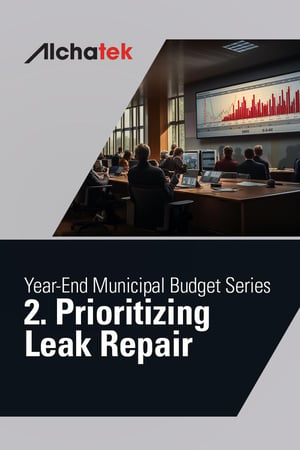
 In the realm of municipal budgeting, the approach of year-end spending often prompts considerations about where to direct the remaining funds. While the temptation might be to disperse these resources broadly across different areas, it's vital to stress the importance of prioritizing infrastructure projects, specifically those related to sealing leaks.
In the realm of municipal budgeting, the approach of year-end spending often prompts considerations about where to direct the remaining funds. While the temptation might be to disperse these resources broadly across different areas, it's vital to stress the importance of prioritizing infrastructure projects, specifically those related to sealing leaks.
The Financial Incentive of Leak Seal Repair
Before delving into strategic allocation, let's consider the financial incentives at play. To illustrate, we'll examine the cost implications of untreated leaks in wastewater systems. According to an article in Water Technology Magazine, the average cost to treat 1000 gallons of wastewater is approximately $2.06. Now, imagine a scenario where a manhole has a 10-gallon-per-minute leak, resulting in 5,256,000 gallons of water leaking annually. This leakage alone incurs a wastewater treatment cost of $10,827.36 per year or $902.28 per month.
In contrast, the average one-time cost to seal all the leaks in a 4-foot diameter by 8-foot-tall manhole with polyurethane grout is approximately $3,000, depending on local labor rates. This relatively low repair cost can be recouped in less than four months, considering the monthly wastewater treatment cost. Subsequently, municipalities save the full $10,827.36 each year. When multiplied across all manholes with similar issues, the potential savings become truly staggering.
Mitigating Infiltration for Cost Savings and Public Health
The financial benefits of leak seal repairs extend beyond cost avoidance; they also address critical public health concerns. Inflow and infiltration (I & I) pose widespread challenges to municipalities, leading to sanitary sewer overflows (SSOs). These overflows, as reported by the EPA, are not only common but also dangerous to public health due to the presence of bacteria, viruses, parasites, and more.
A Simple Yet Effective Plan
To maximize the potential available funds, municipalities can adopt a straightforward yet highly effective plan for mitigating infiltration:
- Inspect and Identify: Begin by inspecting manholes and lift stations for leaks. Identify large, obvious leaks that are contributing to infiltration problems.
- Repair with Polyurethane: Use polyurethane leak seal grout to repair the identified leaks. This process is efficient and cost-effective, with a two-person crew often mitigating substantial leaks in less than a day.
- Realize Significant Savings: The savings realized from this repair work can be substantial, often equating to tens of thousands of dollars in annual funds, depending on the scale of the issue and local conditions.
By following this plan, municipalities can allocate surplus budgets wisely, addressing critical infrastructure needs, saving significant costs, and safeguarding public health.



